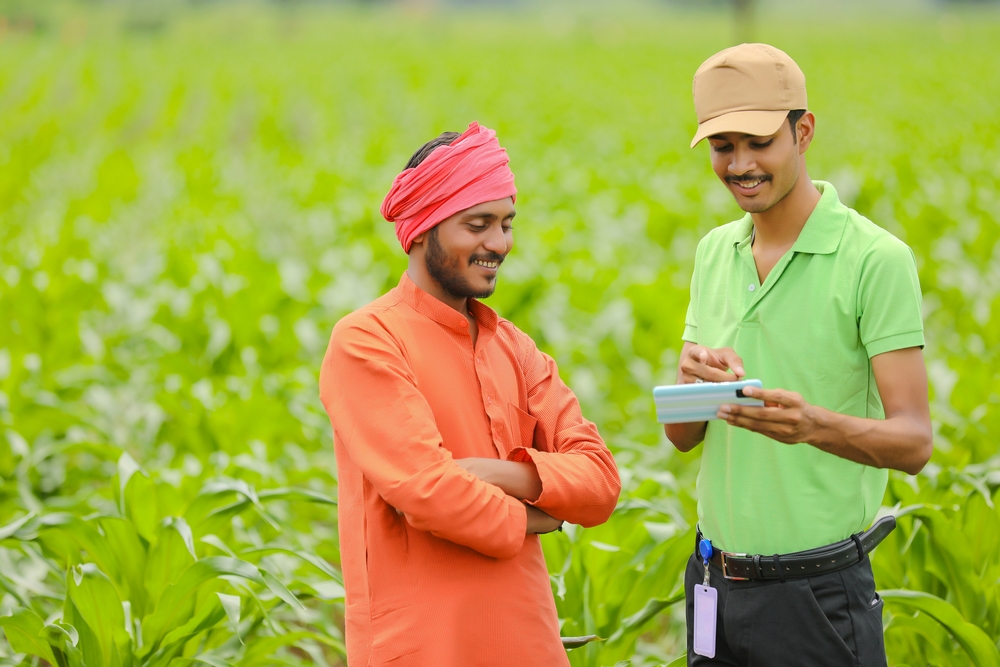Agri-tech set to boost farmers' incomes by 15 - 25 % with improved 'farm to fork' supply chains
Agriculture is an important part of India’s economy with more than 700 million Indians engaged in the sector either directly or indirectly. Despite agriculture contributing 17% to India’s gross domestic product (GDP), farmers face several challenges that limit their productivity—unpredictable weather patterns, limited access to high-quality agri-inputs, lack of access to credit, and fluctuating market prices, to name a few.
As we celebrate 75 years of independence and enter the Amrit Kaal towards 2047, India has a case to embrace technology and boost its agricultural productivity. There is evidence that using technology to support farmers’ decision-making can improve farm yields by as much as 15–25% over the course of a single season and double yields over a period of 3-5 years. Access to markets, digital payments, and supply chain best practices can help farmers realise 10-15% higher prices for their produce. When all of this comes together in a technology-enabled farm-to-fork supply chain, it is entirely possible for farmers to double their incomes over the course of 3–5 years. We have a once-in-a lifetime opportunity to transform the lives of millions of Indian farmers, and it is imperative that all stakeholders come together to make this happen.
In this context, a technology-enabled farm-to-fork supply chain has the potential to dramatically improve farm yields and boost farmers’ incomes. A technology-enabled farm-to-fork supply chain has three parts – supporting farmers to grow better by providing the right information at the right time, helping farmers realise the best value from their output by simplifying the procurement process, and preserving the value and quality of farm produce all the way to the customer’s doorstep.
Supporting the farmer with the right information to make on-farm decisions
The farm-to-fork supply chain starts by providing farmers with information that helps them make better decisions on their farm. Farmers make a number of complex and time-critical decisions during the course of a season, and these decisions affect their farm outcomes. For example, what seed variety is best suited for my farm’s soil and climate? What is the right agrochemical to spray in response to a particular pest attack? What is the optimum interval between irrigation cycles? Farmers’ information and decision-support needs can be categorised into three main types: proactive, reactive, and strategic. Proactive decisions refer to day-by-day crop growing plans that are established ahead of time based on factors like soil type, crop variety, irrigation resources, and farm size. Reactive decisions, on the other hand, are made in response to dynamic parameters like changes in weather, pest infestations, or fungal attacks. Lastly, strategic decisions are complex and include deciding which crops to grow, which varieties to plant, and when to start planting. For proactive solutions, some companies have created user-friendly applications that offer farmers customised crop plans based on their specific plot of land. Each farm has unique nuances, and it’s important to incorporate these details into the crop plan. With the availability of low-cost sensors, it is now possible to get real-time data on the moisture, electrical conductivity, and acidity level of the soil, which go into making these crop plans more precise. For reactive solutions, there are applications that use image recognition technology to detect plant conditions like pest attacks or fungal infections. Farmers can simply take a picture of the affected plant and receive a diagnosis within seconds using their mobile phones. Strategic decisions are hard problems to solve, and this is an area that requires further work.
To the “fork”, Taking farm produce to the customer’s table
Farmers can often be noticed to be tense and stressed when their crop is due for harvest. As they shift gears from being “growers” to “marketers,” farmers are deciding when and where to sell their crop to get the best value from their season’s work. In this context, technology can provide farmers with information on the price of their produce not just in the market in their vicinity but also in the regional, national, and global markets. Some emerging players operate marketplaces where farmers are able to sell their produce to the highest bidder in the country, though there is work required to ensure quality is standardised and fulfilment of goods is streamlined. The technology that powers instant digital payments in our everyday lives has the potential to ensure farmers get paid in minutes instead of the current practice of getting paid in days. A few retailers who source directly from farmers have been able to pay farmers as quickly as 4-5 hours. Finally, a supply chain that moves farm produce to the customer’s doorstep in the most efficient manner can better compensate farmers for their produce. Machine learning tools that work off a picture clicked on a simple smartphone can assess the quality of fresh produce, as can solar-powered on-farm coolers that improve the shelf life of highly perishable items like strawberries, to name a few examples.
(This article is authored by Siddharth Tata, Product Leader, Amazon Fresh Supply Chain and Kisan)



